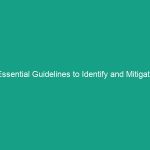Introduction
In today’s fast-paced work Environment, prioritizing health, safety, and environmental (HSE) considerations is more critical than ever. Workplace Safety is not only a regulatory requirement but also a moral duty to protect employees, clients, and the environment. One of the most effective ways to prepare for unexpected emergencies is through well-structured Emergency Response Drills. These drills are essential in ensuring that employees are equipped with the knowledge and skills needed to respond to various emergencies, ranging from natural disasters to workplace accidents.
The importance of Emergency Response Drills cannot be overstated. They create a culture of Safety, enhance preparedness, and reduce the potential for panic during actual emergencies. This article delves into must-know emergency response drills, essential guidelines for safety, and Best Practices that can help organizations foster a safer workplace.
Understanding Regulatory Frameworks for Emergency Preparedness
Every organization should be aware of the regulatory frameworks that govern Workplace Safety. In many countries, there are specific laws and Regulations that mandate emergency preparedness and response. Understanding these regulations is the first step in establishing effective Emergency Response Drills.
Key Regulatory Bodies
In the United States, for instance, the Occupational Safety and Health Administration (OSHA) provides guidelines that require employers to develop emergency action plans. Similarly, the National Fire Protection Association (NFPA) offers Standards that organizations must follow to ensure fire safety and emergency response. Familiarizing yourself with these regulations not only aids compliance but also enhances overall safety.
International Standards
On a global scale, organizations can refer to standards such as ISO 45001, which provides a framework for Occupational Health and safety management systems. Compliance with such standards ensures that an organization’s emergency response protocols are robust, comprehensive, and recognized internationally.
Importance of Compliance
Adhering to these regulatory frameworks is crucial for several reasons. Firstly, it helps avoid legal penalties and fines associated with non-compliance. Secondly, it fosters a culture of safety and accountability within the organization, where employees feel valued and protected. Lastly, compliance can enhance an organization’s reputation, making it more attractive to potential clients and employees.
Best Practices for Implementing Emergency Response Drills
Implementing effective Emergency Response Drills requires careful planning and execution. Here are some Best Practices to consider:
1. Conduct a Risk Assessment
Before implementing any drills, it’s essential to conduct a thorough risk assessment. This involves identifying potential Hazards in the workplace, evaluating the risks associated with these Hazards, and determining the necessary Precautions. Understanding the specific risks that your organization faces is crucial for tailoring drills that address these concerns.
2. Develop a Comprehensive Emergency Plan
A well-defined emergency plan is the backbone of any effective drill. This plan should outline the Procedures for various emergency scenarios, including evacuation routes, roles and responsibilities of employees, communication protocols, and first aid procedures. Ensure that the plan is easily accessible and communicated to all employees.
3. Train Employees Regularly
Training is an ongoing process. Regularly scheduled Training sessions will keep employees informed about their roles in an emergency. Use a variety of training methods, including workshops, online courses, and hands-on practice, to cater to different learning styles. Engaging employees in discussions about emergency procedures also reinforces their understanding and preparedness.
4. Conduct Realistic Drills
While theoretical knowledge is essential, practical experience is invaluable. Conduct realistic drills that simulate actual emergency scenarios. This helps employees practice their responses and become familiar with emergency equipment and procedures. For instance, fire drills should include the use of fire alarms and extinguishers, while medical emergency drills should involve first aid kits and CPR techniques.
5. Evaluate and Improve
After each drill, conduct a debriefing session to evaluate the effectiveness of the response. Gather feedback from participants to identify areas for improvement. This iterative process ensures that your emergency protocols evolve based on real experiences and lessons learned.
Case Studies: Successful Emergency Response Drills
Real-world examples can provide valuable insights into effective Emergency Response Drills. Here are a few case studies highlighting successful implementations:
1. Oil and Gas Industry
In the oil and gas sector, emergency preparedness is paramount due to the high-risk nature of operations. One company implemented quarterly emergency response drills that simulated oil spills and Fires. Employees were trained in containment procedures and evacuation protocols. Following a significant incident, the organization credited its comprehensive training and drills for minimizing harm and facilitating a swift response.
2. Educational Institutions
A university in California faced challenges related to active shooter scenarios. In response, the administration established a partnership with local law enforcement to conduct annual drills. These drills included not only Evacuation Procedures but also communication strategies to keep students informed during emergencies. The collaboration resulted in improved Safety Measures and a heightened sense of security among the campus community.
3. Manufacturing Facility
A manufacturing facility experienced a chemical leak that prompted an immediate emergency response. The company had conducted regular drills focusing on chemical spills, allowing employees to respond effectively. Their prior training enabled a quick containment of the leak, demonstrating the value of realistic emergency response scenarios.
Challenges in Implementing Emergency Response Drills
While conducting Emergency Response Drills is essential, various challenges can hinder their effectiveness:
1. Employee Engagement
One of the most significant challenges is ensuring employee engagement during drills. Some employees may view drills as a disruption to their work routine or may be complacent about safety. To combat this, organizations should emphasize the importance of drills and incorporate engaging elements, such as gamification or incentives for participation.
2. Resource Constraints
Implementing comprehensive drills may require significant resources, including time, personnel, and finances. Organizations can address this challenge by prioritizing drills based on the most pressing risks and seeking partnerships with external agencies for training and resources.
3. Maintaining Realism
Another challenge is maintaining realism in drills. If employees perceive drills as mere formalities, they may not take them seriously. Organizations should strive to create realistic scenarios that challenge employees to think critically and react appropriately, thereby enhancing their preparedness for actual emergencies.
The Future of Emergency Response Drills
As technology continues to evolve, so too do the methodologies and tools available for Emergency Response Drills. The future may see a greater reliance on virtual reality (VR) and augmented reality (AR) technologies, allowing employees to engage in immersive training experiences. These technologies can simulate various emergency situations, providing a safe environment for practice without the risks associated with real emergencies.
1. Integration of Technology
Organizations may also leverage mobile applications to enhance communication during drills. Real-time updates and instructions can be disseminated to employees via smartphones, ensuring that they are always informed and prepared. This integration of technology can streamline the response process and improve overall safety.
2. Increased Focus on Mental Health
Additionally, the conversation around mental health is becoming increasingly important in emergency preparedness. Organizations are recognizing the need to provide psychological support to employees who may be affected by traumatic events. Including mental health training as part of emergency drills can help employees cope with the emotional aftermath of an emergency.
3. Continuous Improvement and Adaptation
The landscape of Workplace Emergencies is constantly evolving, and so should emergency response protocols. Organizations must commit to continuous improvement and adaptation, regularly updating their emergency plans and drills based on emerging risks, regulatory changes, and lessons learned from past incidents.
Conclusion
Emergency preparedness is a critical component of Workplace Safety, and effective Emergency Response Drills play a vital role in ensuring that organizations are equipped to handle unforeseen circumstances. By understanding regulatory frameworks, implementing best practices, learning from case studies, overcoming challenges, and embracing future trends, organizations can create a culture of safety that protects employees and the environment.
As you reflect on your organization’s approach to emergency preparedness, consider taking action today. Review your emergency plans, engage employees in training, and conduct realistic drills. Remember, the safety of your workplace is only as strong as the commitment to preparedness. Together, let’s foster a safer work environment for everyone.


